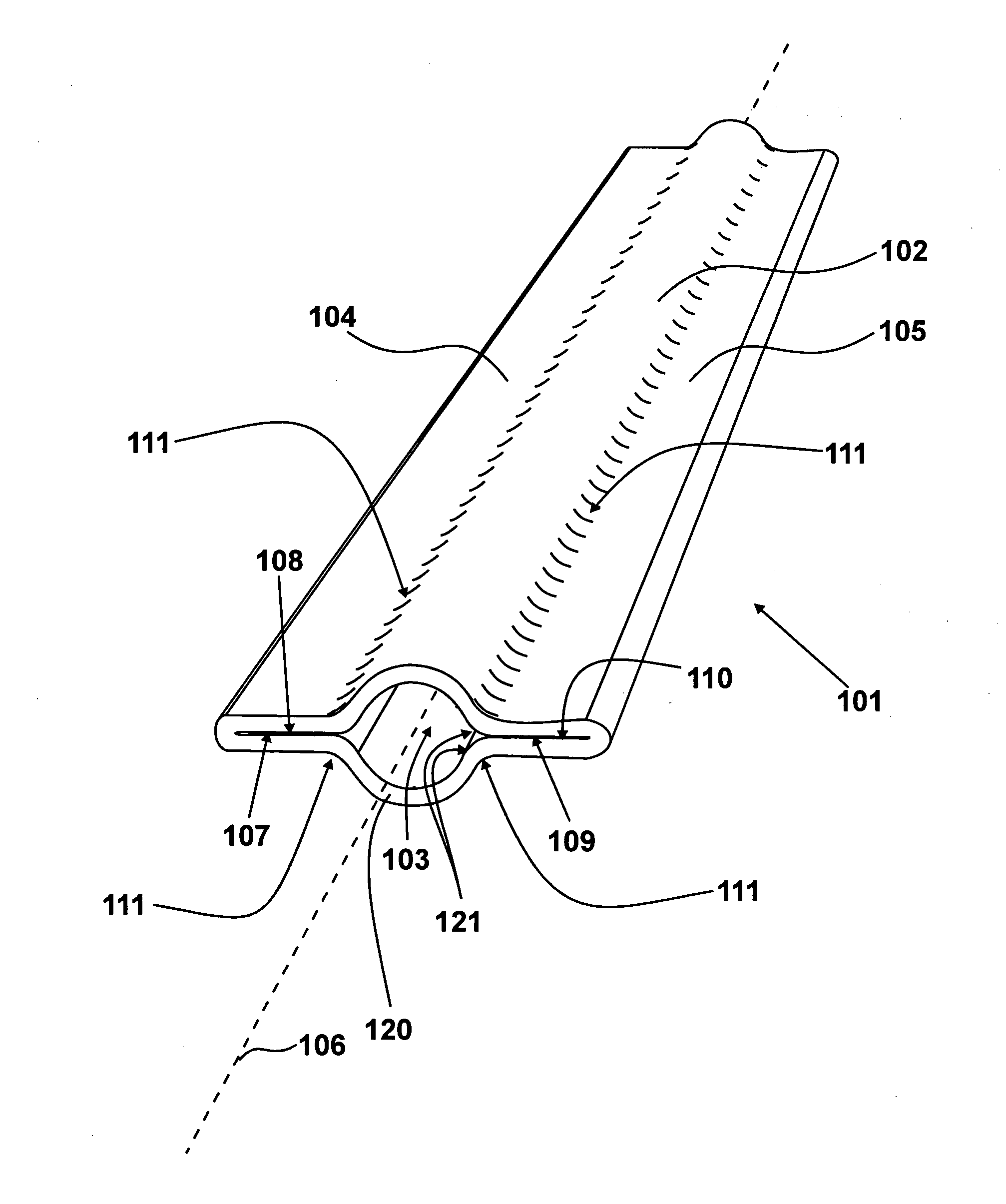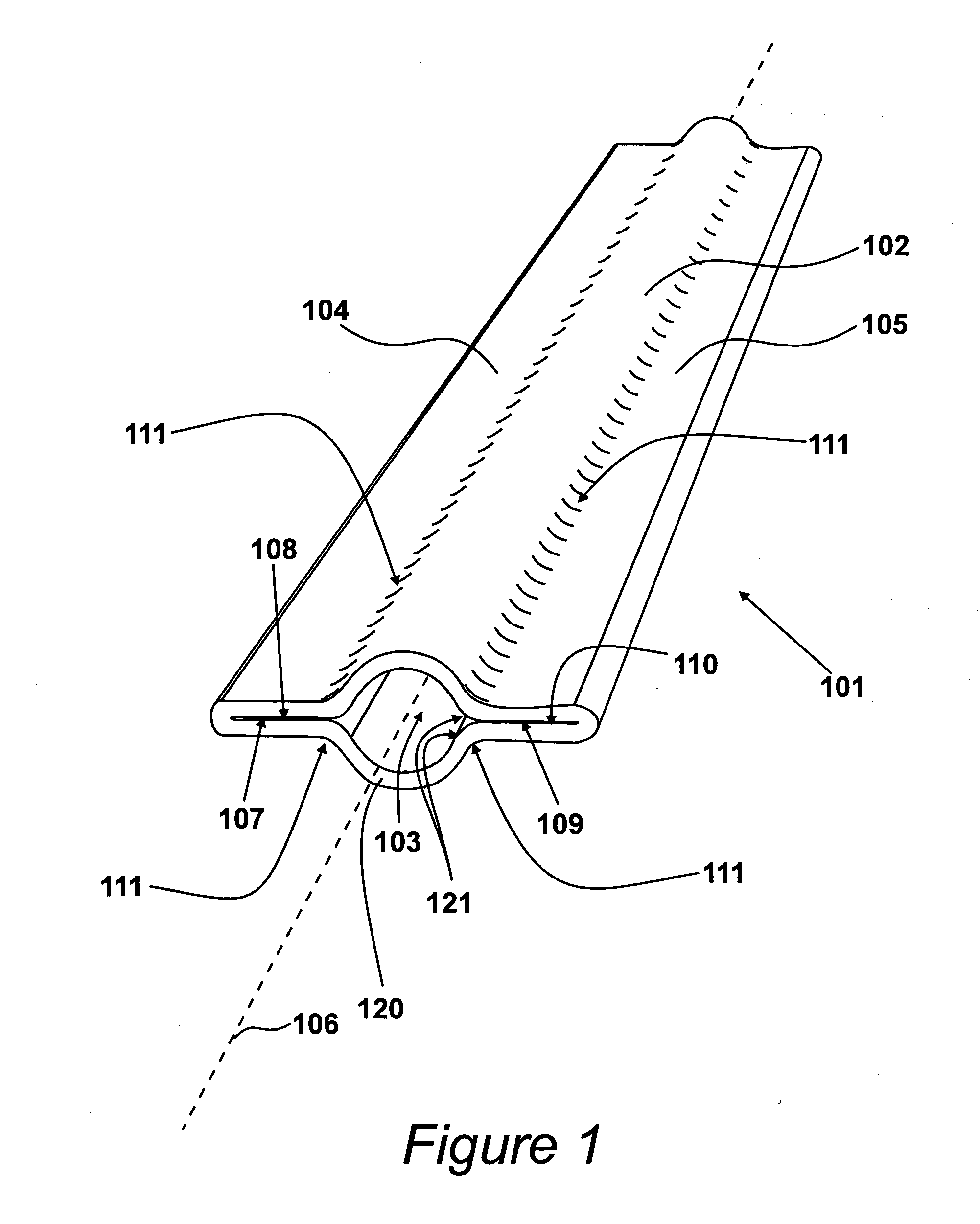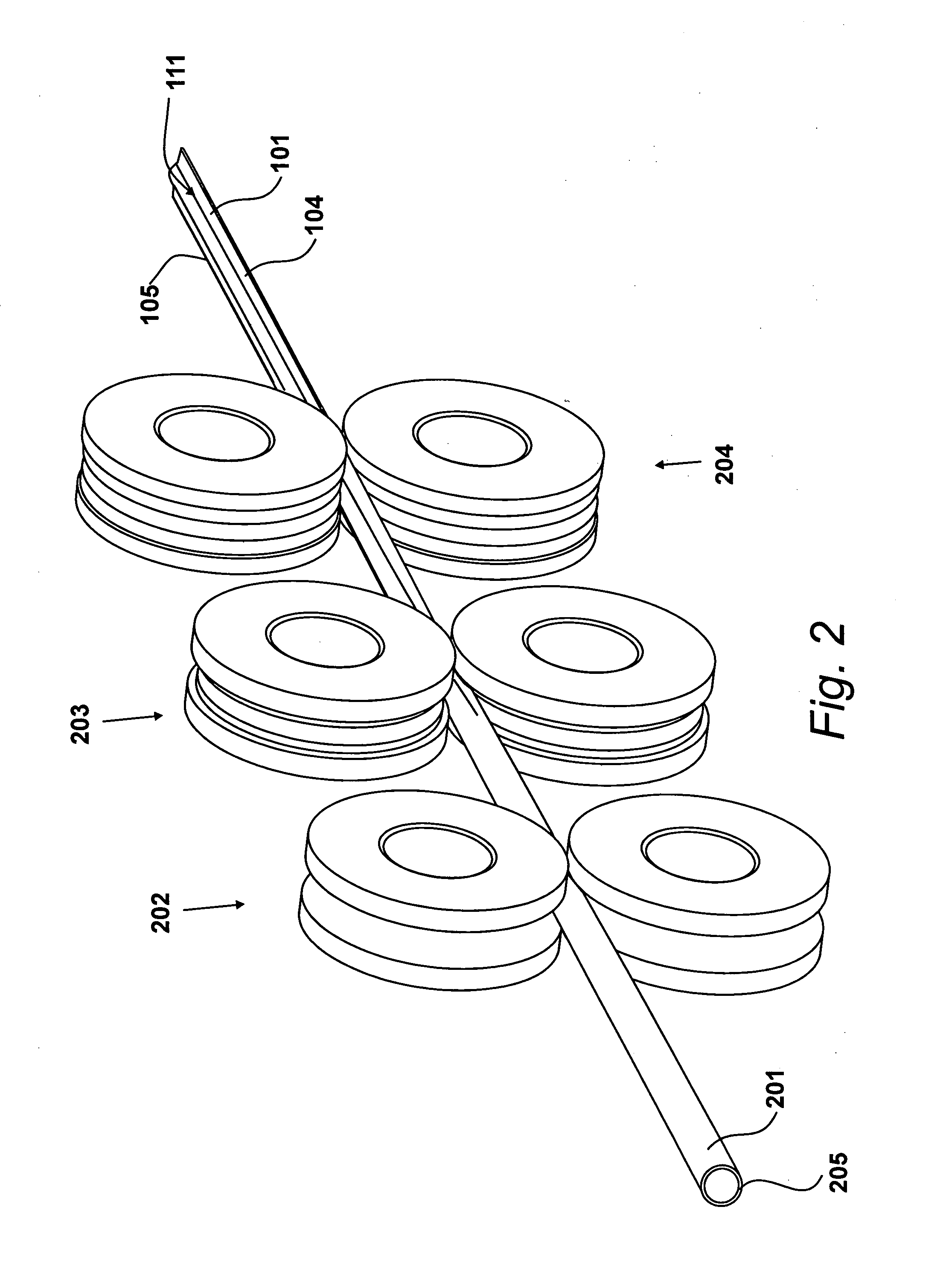Heat transfer tube
a technology of heat transfer tube and heat conductor, which is applied in the direction of heat exchange apparatus, stationary conduit assembly, light and heating apparatus, etc., can solve the problems of reduced heat transfer coefficient, reduced mechanical rigidity, and insufficient use of additional heat conducting materials to create heat transfer surfaces, etc., to achieve the effect of increasing the total heat transfer surface, increasing mechanical rigidity, and increasing mechanical rigidity
- Summary
- Abstract
- Description
- Claims
- Application Information
AI Technical Summary
Benefits of technology
Problems solved by technology
Method used
Image
Examples
Embodiment Construction
FIG. 1
[0038]A heat transfer tube 101 embodying the present invention is shown in FIG. 1. The tube 101 has a central main flow portion 102 defining a main bore 103. A first wing-shaped protrusion 104 extends from one side of the main flow portion 102 and a second wing-shaped protrusion 105 extends from the opposite side of the main flow portion 102. Thus, the two wing-shaped protrusions 104 and 105 are symmetrically arranged around a centre line (or axis) 106 of the tube. As may be observed from FIG. 1, as well as extending away from the main flow portion 102, each of the wing-shaped protrusions extend axially along the tube 101. That is, they extend along the tube parallel to the axis 106.
[0039]As will be explained in further detail below, the tube 101 is formed by deforming a length of cylindrical tubing. More specifically, the wall 120 of the tube is folded into the shape shown in FIG. 1. In the present case, the material of the tube has been deformed such that a portion 107 of th...
PUM
| Property | Measurement | Unit |
|---|---|---|
| Length | aaaaa | aaaaa |
| Shape | aaaaa | aaaaa |
| Surface area | aaaaa | aaaaa |
Abstract
Description
Claims
Application Information
 Login to View More
Login to View More - R&D
- Intellectual Property
- Life Sciences
- Materials
- Tech Scout
- Unparalleled Data Quality
- Higher Quality Content
- 60% Fewer Hallucinations
Browse by: Latest US Patents, China's latest patents, Technical Efficacy Thesaurus, Application Domain, Technology Topic, Popular Technical Reports.
© 2025 PatSnap. All rights reserved.Legal|Privacy policy|Modern Slavery Act Transparency Statement|Sitemap|About US| Contact US: help@patsnap.com



